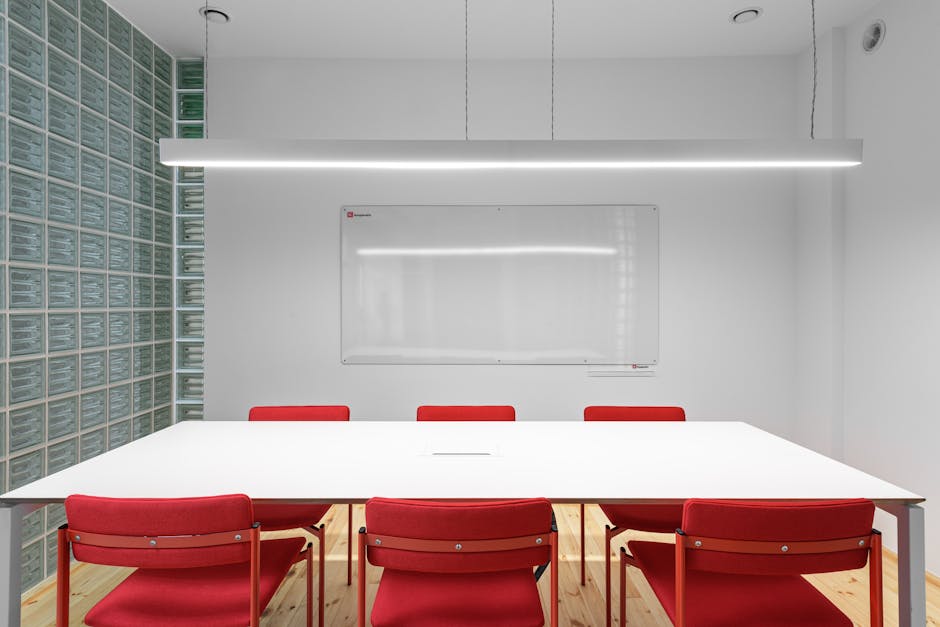Crafting the Perfect Return to Office Survey: Essential Questions for a Smooth Transition
“As companies navigate the post-pandemic workplace, a well-designed return to office survey is crucial. This article explores essential questions to include, covering topics like work preferences, safety concerns, and productivity factors, to ensure a smooth and employee-centric transition back to the office. ”

Crafting the Perfect Return to Office Survey: Essential Questions for a Smooth Transition
As businesses adapt to the evolving workplace landscape, understanding employee sentiments and preferences is crucial for a successful return to office strategy. A well-designed return to office survey can provide valuable insights to help organizations create a workplace that meets both company goals and employee needs. In this article, we'll explore key questions to include in your survey, ensuring a comprehensive understanding of your workforce's expectations and concerns.

Why Conduct a Return to Office Survey?
Before diving into the specific questions, it's important to understand the value of conducting a return to office survey:
- Gauge employee sentiment: Understand how your workforce feels about returning to the office.
- Identify concerns: Uncover potential issues that may hinder a smooth transition.
- Inform decision-making: Use data-driven insights to shape your return to office policies.
- Demonstrate employee-centricity: Show that you value employee input in shaping the future workplace.
Essential Return to Office Survey Questions
Work Preferences and Productivity
-
How many days per week would you prefer to work in the office?
- Options: 0-1 day, 2-3 days, 4-5 days, Full-time remote
-
Which work model do you believe allows you to be most productive?
- Options: Fully remote, Hybrid, Fully in-office
-
What aspects of in-office work do you find most beneficial? (Select all that apply)
- Collaboration with colleagues
- Access to office resources and technology
- Separation of work and home life
- Face-to-face meetings with clients or stakeholders
- Other (please specify)
Safety Concerns and Protocols
-
How comfortable do you feel about returning to the office?
- Scale: 1 (Very uncomfortable) to 5 (Very comfortable)
-
What safety measures would make you feel more secure in the office? (Select all that apply)
- Regular sanitization of workspaces
- Mandatory mask-wearing in common areas
- Social distancing protocols
- Improved ventilation systems
- Vaccination requirements
- Other (please specify)

Workplace Experience and Amenities
-
What office amenities or services would enhance your workplace experience? (Select all that apply)
- Flexible seating arrangements
- Quiet zones for focused work
- Collaboration spaces
- Wellness areas (e.g., meditation rooms, fitness facilities)
- On-site food options
- Other (please specify)
-
How important is desk rotation or hot-desking to your ideal office setup?
- Scale: 1 (Not important at all) to 5 (Very important)
Communication and Support
-
How well has the company communicated its return to office plans?
- Scale: 1 (Very poorly) to 5 (Very well)
-
What additional support or resources would you need for a successful return to the office?
- Open-ended question
Work-Life Balance and Flexibility
-
How important is flexibility in your work schedule to your job satisfaction?
- Scale: 1 (Not important at all) to 5 (Very important)
-
What challenges do you anticipate in returning to the office? (Select all that apply)
- Commute time and costs
- Childcare or family responsibilities
- Reduced flexibility for personal appointments
- Decreased work-life balance
- Other (please specify)
Technology and Equipment
-
Do you have all the necessary equipment and technology to work effectively both in the office and remotely?
- Yes
- No (If no, please specify what you need)
-
How comfortable are you with using space management tools for desk booking or meeting room reservations?
- Scale: 1 (Very uncomfortable) to 5 (Very comfortable)

Open-Ended Feedback
-
What suggestions do you have for improving the return to office experience?
- Open-ended question
-
Is there anything else you'd like to share about returning to the office?
- Open-ended question
Best Practices for Conducting Your Survey
To ensure you get the most valuable insights from your return to office survey, consider these best practices:
-
Ensure anonymity: Guarantee that responses will be kept confidential to encourage honest feedback.
-
Keep it concise: Aim for a survey that takes no more than 10-15 minutes to complete.
-
Use a mix of question types: Combine multiple-choice, scale, and open-ended questions for comprehensive insights.
-
Provide context: Clearly explain the purpose of the survey and how the results will be used.
-
Follow up: Share key findings and action plans with employees to demonstrate that their input is valued and acted upon.
Conclusion
A well-crafted return to office survey is an invaluable tool for organizations navigating the complexities of the post-pandemic workplace. By asking the right questions and actively listening to employee feedback, companies can create a workplace strategy that balances business needs with employee preferences and concerns.
Remember, the transition back to the office is not just about physical space—it's about creating an environment where employees feel safe, productive, and engaged. Use the insights gained from your survey to inform decisions, refine policies, and ultimately build a workplace that supports your organization's success in the new era of work.
By taking a thoughtful, employee-centric approach to your return to office planning, you'll be well-positioned to create a workplace that attracts and retains top talent while driving productivity and innovation.